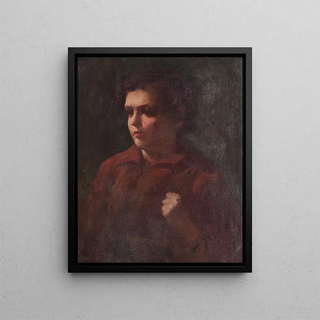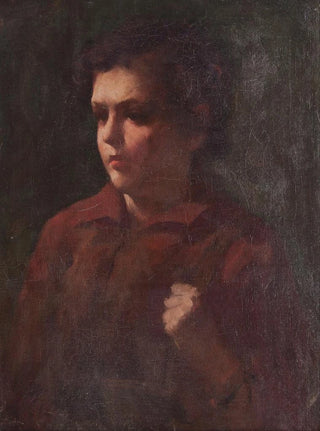Painting Study of a Schoolboy - Frank Duveneck | Art print


View from behind

Frame (optional)
In the fascinating world of art, some works stand out for their ability to capture not only the essence of the subject but also the soul of the artist. "Study of a Schoolboy - Frank Duveneck" is one of those creations that transcends the simple frame of painting to become an open window into youth, learning, and intellectual curiosity. This painting, imbued with delicacy, transports us to a suspended moment where the schoolboy, both innocent and eager to learn, embodies the hope of a generation. The depiction of this child, frozen in an attentive posture, invites the viewer to reflect on the fundamental role of education and creativity in shaping identity.
Style and uniqueness of the work
Duveneck's work is distinguished by its realistic style, characterized by impressive mastery of drawing and a subtly nuanced color palette. In "Study of a Schoolboy," the artist chooses to highlight light and shadow, creating an intimate atmosphere that envelops the young protagonist. The features of the schoolboy's face, both expressive and delicate, reveal a psychological depth that goes beyond simple representation. The way Duveneck captures the child's concentration, with their gaze fixed on an invisible point, testifies to meticulous observation and sensitivity towards human nature. This painting, with its apparent simplicity, evokes emotional complexity that touches the heart and mind, making the work deeply immersive.
The artist and his influence
Frank Duveneck, an emblematic figure of 19th-century American art, knew how to mark his era with his innovative approach and ability to blend tradition and modernity. Born in Cincinnati, he was influenced by the great European masters while developing a personal style that is uniquely his own. His works, including "Study of a Schoolboy," reflect a keen sensitivity to daily life and human relationships. Duveneck also played a crucial role in art education, inspiring many students to explore their own creativity. His impact is felt not

Matte finish

View from behind

Frame (optional)
In the fascinating world of art, some works stand out for their ability to capture not only the essence of the subject but also the soul of the artist. "Study of a Schoolboy - Frank Duveneck" is one of those creations that transcends the simple frame of painting to become an open window into youth, learning, and intellectual curiosity. This painting, imbued with delicacy, transports us to a suspended moment where the schoolboy, both innocent and eager to learn, embodies the hope of a generation. The depiction of this child, frozen in an attentive posture, invites the viewer to reflect on the fundamental role of education and creativity in shaping identity.
Style and uniqueness of the work
Duveneck's work is distinguished by its realistic style, characterized by impressive mastery of drawing and a subtly nuanced color palette. In "Study of a Schoolboy," the artist chooses to highlight light and shadow, creating an intimate atmosphere that envelops the young protagonist. The features of the schoolboy's face, both expressive and delicate, reveal a psychological depth that goes beyond simple representation. The way Duveneck captures the child's concentration, with their gaze fixed on an invisible point, testifies to meticulous observation and sensitivity towards human nature. This painting, with its apparent simplicity, evokes emotional complexity that touches the heart and mind, making the work deeply immersive.
The artist and his influence
Frank Duveneck, an emblematic figure of 19th-century American art, knew how to mark his era with his innovative approach and ability to blend tradition and modernity. Born in Cincinnati, he was influenced by the great European masters while developing a personal style that is uniquely his own. His works, including "Study of a Schoolboy," reflect a keen sensitivity to daily life and human relationships. Duveneck also played a crucial role in art education, inspiring many students to explore their own creativity. His impact is felt not
12,34 €






